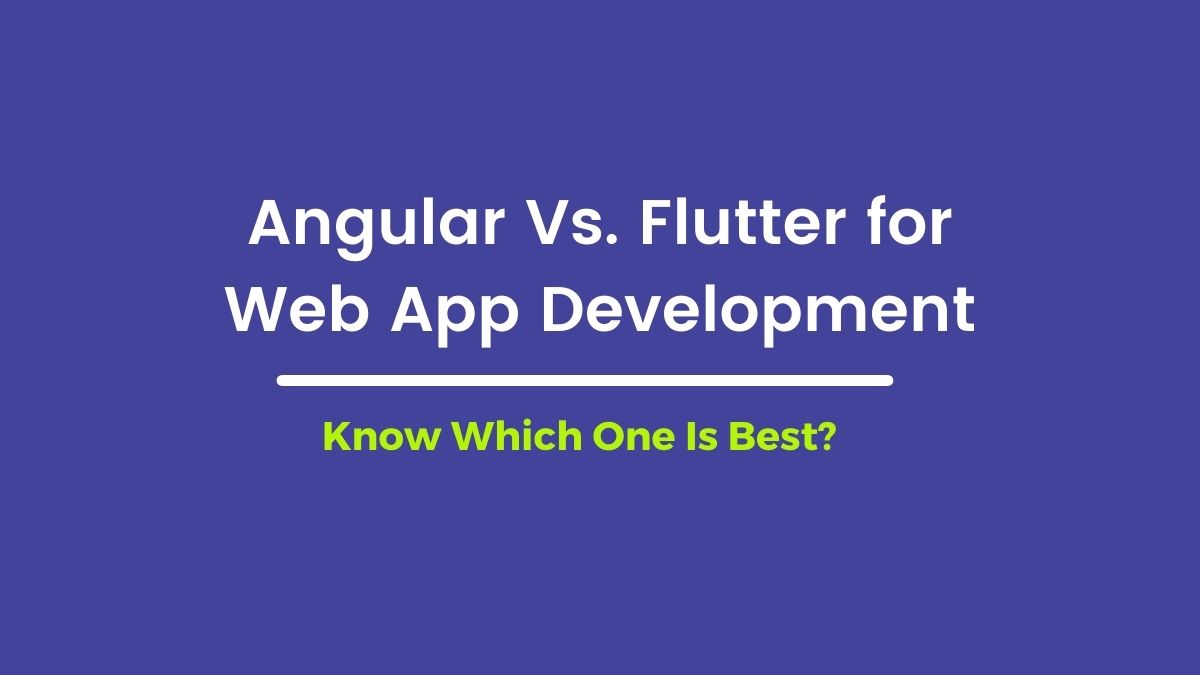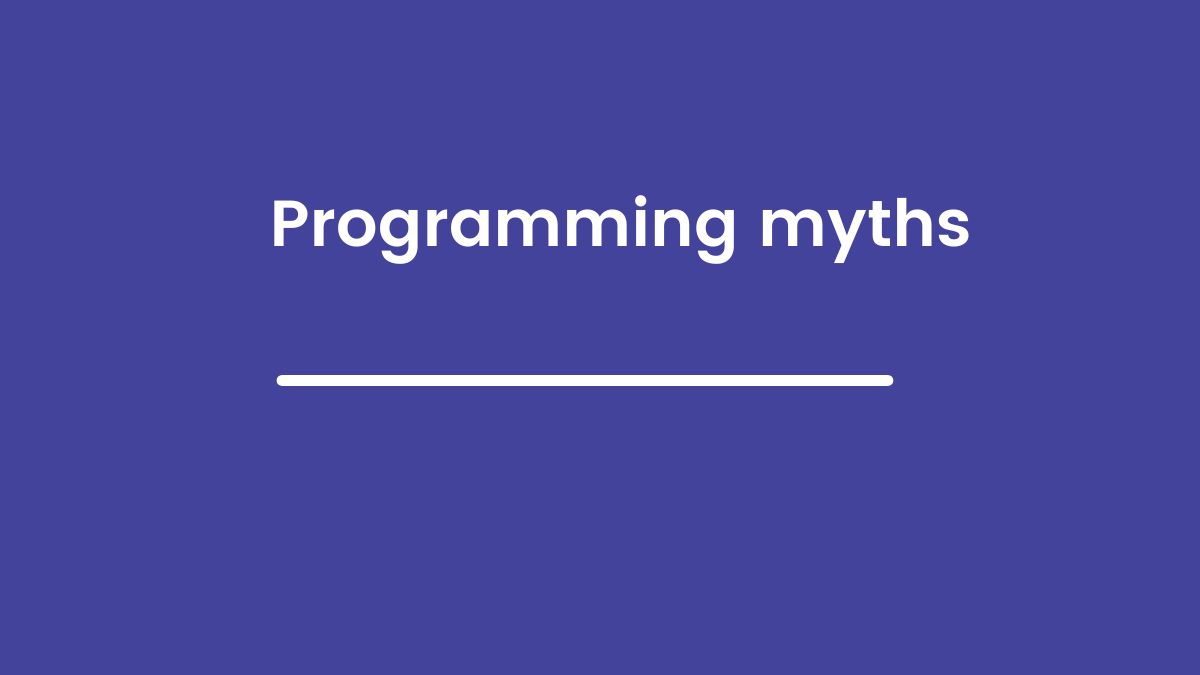In the current tech landscape, web app development is essential for companies in search of virtual prominence. Angular and Flutter end up as 2 distinguished frameworks, developed via Google, to facilitate sturdy web packages.
Angular, a comprehensive framework, and Flutter, famous for its UI toolkit, offer notable advantages.
Choosing the right framework is pivotal, as it will impact Website project or web app development efficiency and long-term achievements.
This evaluation among Angular and Flutter hobbies to guide developers and companies to elucidate the ideal skills and issues needed to ensure an informed preference inside the dynamic realm of internet app improvement.
Comparative Analysis
Now that we have a gist of what are Angular and Flutter famous for, let’s jump into their feature comparisons one by one.
Performance and scalability
Angular: Angular, with its sturdy performance optimization features, excels in turning top-notch internet applications. The framework’s state-of-the-art trade detection mechanism ensures efficient updates, minimizing unnecessary recalculations and enhancing fundamental typical performance.
Real-international examples show off Angular’s prowess in dealing with complex applications with tremendous pace and responsiveness, making it a preferred desire for agency-level obligations and stressful top-of-the-line performance at scale.
Flutter: Flutter’s universal performance is underscored by using its inexperienced rendering engine, providing easy and fluid individual research. Leveraging local compilation, Flutter minimizes overall performance, resulting in speedy and reliable net programs.
Notable Flutter internet apps exemplify excessive usual overall performance metrics and highlight the framework’s potential to address aid-intensive tasks seamlessly. Flutter’s emphasis on overall performance positions it as an incredible preference for tasks wherein speed, efficiency, and scalability are paramount.
Community support and ecosystem
Angular: Angular prospers within a great and energetic community, contributing to its sturdy surroundings. This community engagement fosters collaboration and know-how sharing.
In addition, Angular benefits from a wealthy repository of 1/3 party libraries and tools that decorate its versatility. Developers in the Angular surroundings can leverage those belongings to streamline development and expand functionality.
Furthermore, Angular presents prolonged-term aid and balance, instilling confidence in developers and businesses counting on the framework for extended responsibilities. This dedication ensures Angular remains a dependable and sustainable desire for web software development.
Flutter: Flutter’s community is examined, revealing its enlargement and lively engagement. The framework has witnessed a developing and enthusiastic community, indicating its increasing adoption.
The Flutter community actively contributes to the framework’s evolution, fostering innovation, addressing challenges, and guiding the framework towards non-stop development. This collaborative spirit guarantees Flutter remains dynamic, adaptable, and aligned with the evolving needs of developers and the broader technological panorama.
Dart packages and plugins display the richness of the surroundings, providing Flutter builders with a massive array of belongings to beautify their tasks.
Code Reusability and Hot Reload
Angular: Angular excels in code reusability through a meticulous evaluation of its method. The framework adopts a modular shape, allowing developers to compartmentalize additives for efficient reuse. This modular shape no longer efficiently enhances code agency but simplifies preservation and scalability.
Angular’s warm module replacement competencies further contribute to the code’s overall performance. Developers can introduce modifications without a complete internet web page refresh, ensuring rapid iterations in the course of the improvement manner.
This not only improves development speed but also aids in figuring out and addressing troubles without delay, fostering further streamlined and responsive coding enjoyed within the Angular framework.
Flutter: Flutter embraces immoderate code reusability through its extraordinary widget-based overall device. This method promotes modular and green code sharing, permitting developers to create and reuse widgets for the unique additives of the software program.
Additionally, Flutter’s widget-based total structure significantly contributes to green code sharing, simplifying the improvement method for complex individual interfaces parallelly ensuring seamless and effective coding revealed within the Flutter framework.
Developer tools and debugging
Angular: Angular provides builders with a sturdy set of included debugging equipment, facilitating effective troubleshooting at some point in the improvement system. This equipment provides insights into the software program’s country, supporting builders in discovering and rectifying troubles efficaciously.
Additionally, Angular seamlessly integrates with popular Integrated Development Environments (IDEs) and extensions, enhancing the developer’s coding surroundings.
Real-international examples underscore the effectiveness of debugging in Angular duties, showcasing how builders leverage that equipment to diagnose and treat annoying conditions right away.
The combination of included gears and integration skills establishes Angular as a framework that prioritizes a seamless and efficient debugging experience.
Flutter: Flutter gives insightful debugging abilities that contribute to a smooth improvement. Developers benefit from included debugging gadgets and seamless compatibility with famous IDEs.
The performance of Flutter’s debugging manner is highlighted, showcasing how builders can discover, examine, and clear up problems directly. This emphasis on robust debugging tools ensures developers using Flutter have the essential resources to create first-rate, error-free packages, contributing to nice and effective development surroundings within the Flutter framework.
The show-off of Flutter’s DevTools emphasizes its role in profiling and overall usual performance evaluation, permitting developers to optimize their programs efficiently.
Learning curve and developer experience
Angular: Angular’s reading curve is comprehensively evaluated, considering its function-rich nature and inherent complexity.
While disturbing willpower from developers, Angular’s funding can pay off in successfully managing complex tasks.
The sizeable documentation proves crucial, aiding developers of various talent stages in navigating the adventure of gaining knowledge.
Notably, the Angular CLI streamlines responsibilities, automated workflows, and enforces Angular Best practices for enhanced performance and standardized development surroundings. As a result, the developer’s experience with the Angular framework is smoother and more cohesive.
Flutter: Flutter’s reading curve delves into Dart programming language and the Flutter framework. Despite preliminary disturbing conditions, developers collect abilities useful for move-platform development.
Flutter’s celebrated warm reload characteristic accelerates improvement with the resource of allowing real-time code updates, fostering green debugging.
The widget-based architecture, essential to Flutter’s revel, promotes modularity and versatility, simplifying improvement and ensuring consistency throughout hard purchaser interfaces. This structure appreciably enhances the general developer’s experience inside the Flutter framework.
Flexibility and Adaptability
Angular: Angular demonstrates extraordinary flexibility, especially for large-scale agency packages. Its modular structure and sizeable function set make it nicely suited for dealing with the complexity inherent in such initiatives.
Angular’s adaptability extends to various assignment sizes and complexities, offering builders the equipment to scale applications effectively. Successful Angular initiatives in numerous industries serve as a show off of its adaptability, demonstrating its efficacy throughout domain names like finance, healthcare, e-trade, etc.
Flutter: Flutter exhibits adaptability to particular show display sizes and devices, a vital function for cross-platform development. Its capacity to keep regular client interfaces across numerous structures underscores its suitability for both, mobile and net domains.
Successful Flutter obligations in one’s domain names show off its versatility. With packages seamlessly transitioning amongst wonderful devices, it offers responsive and uniform enjoyment. This adaptability positions Flutter as a compelling preference for tasks requiring consistency at some point of various systems and display sizes.
Conclusion
In a nutshell, Angular and Flutter offer exquisite benefits in internet application improvement. Angular’s feature-wealthy framework needs dedication but excels in coping with complex obligations, supported by massive documentation and a powerful CLI.
Flutter, with its particular language and structure, proves attractive for circulate-platform development, boasting a celebrated hot reload function. Its widget-based complete system complements code reusability and simplifies elaborate UI improvement.
Ultimately, the selection between Angular and Flutter is based on venture requirements, developer opportunities, and the favored balance between comprehensive features and streamlined, responsive improvement methods.
Reports:-
Plagiarism Report:
AI Report:
Yoast Report:
Author Name:- Harikrishna Kundariya
Biography:- Harikrishna Kundariya, a marketer, developer,
IoT, ChatBot & Blockchain savvy, designer, co-founder,
Director of eSparkBiz Technologies. His 12+ years of
experience enables him to provide digital solutions to new
start-ups based on IoT and SaaS applications.






